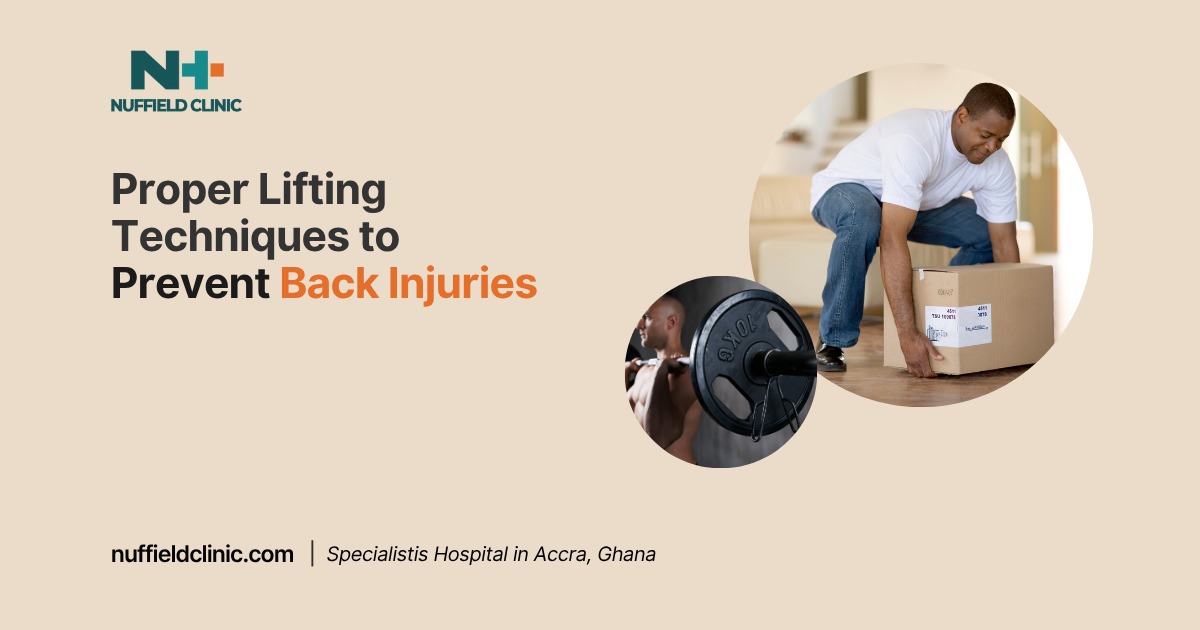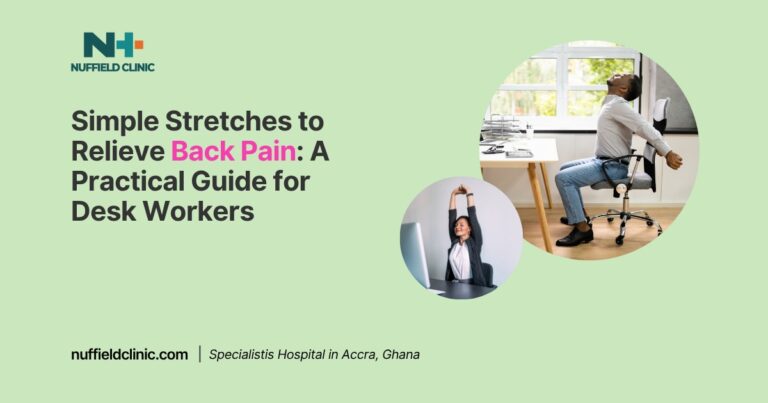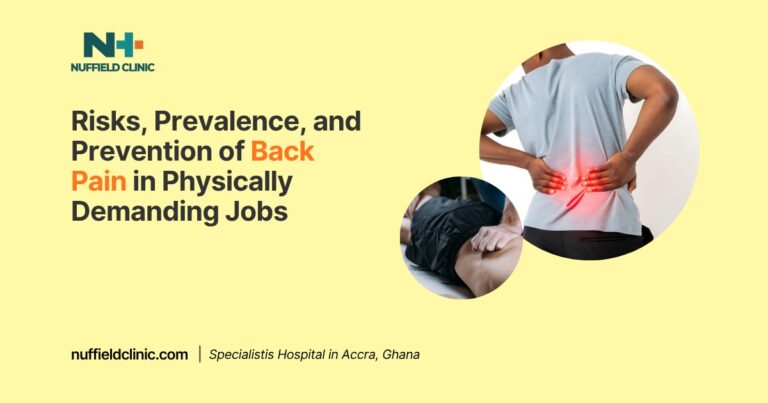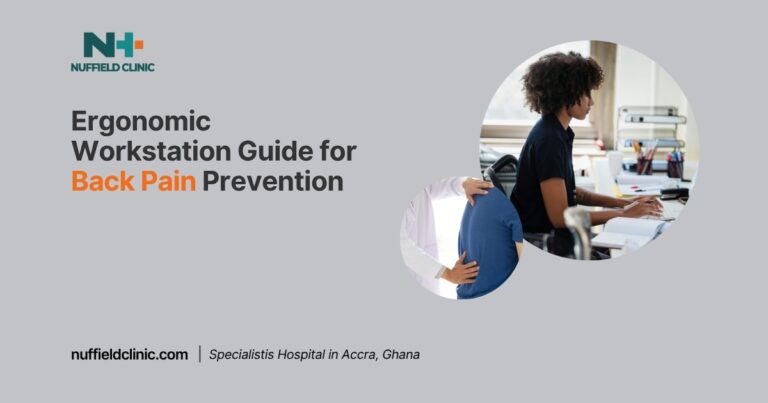Proper Lifting Techniques to Prevent Back Injuries

What are some best practices when it comes ot lifting heavy items? What advice do our specialist physiotherapists here at Nuffield Clinic give on how to prevent back injuries? Back injuries are among the most common workplace and daily-life health issues, often caused by poor lifting habits.
After two decades of working with patients and employees across various industries, I have seen that the majority of injuries are preventable with consistent use of proper lifting techniques. Protecting your spine is not simply about avoiding one-off strains; it is about maintaining long-term back health and preventing cumulative damage that builds over the years.
The foundation of safe lifting lies in understanding body mechanics and applying them each time you lift, whether it is a heavy box at work or an everyday household item.
Why Proper Lifting Matters
Improper lifting is one of the leading causes of back injuries, including muscle strains and herniated discs. Many of these injuries do not come from one major accident but from repeated poor movements. Twisting, bending from the waist, or pulling heavy loads without preparation can cause significant damage over time. By learning and applying correct techniques, you can reduce unnecessary strain and safeguard your spine.
Key Principles of Safe Lifting
The most important rule is to lift with your legs, not your back. Your hips and thighs are stronger and better equipped to handle weight than the small muscles of your lower back. This distributes the load more evenly and reduces the risk of muscle strain or disc injury.
Before lifting, assess the object. Check its weight and shape, and clear your surroundings to prevent tripping or awkward movements. If the load is too heavy or bulky, ask for help or use lifting aids such as dollies or straps.
When lifting, position yourself close to the object. Bend at your hips and knees, keeping your back straight and aligned with its natural curves. Avoid rounding your shoulders or hunching forward. As you rise, hold the load close to your body, keeping it stable. This minimises leverage forces acting on the spine.
Never twist your torso while carrying a load. If you need to change direction, move your feet rather than turning at the waist. Twisting under strain places unnecessary pressure on spinal discs and ligaments. Equally important is maintaining a firm grip. Use your palms rather than just fingers for a strong hold, and engage your abdominal muscles to stabilise your spine.
Setting the load down is just as important as lifting it up. Lower it carefully by squatting with your legs, keeping your back straight throughout the motion. Dropping into a bent position can be as damaging as an improper lift.
Additional Support for Back Safety
Safe lifting is more effective when supported by good daily habits. Stretch before handling heavy items to prepare your muscles for activity. Store frequently used objects at waist level to minimise repeated bending and reaching. Maintain physical conditioning through core strengthening, as a strong midsection supports proper posture during lifting.
In many workplaces and homes, assistive devices such as lifting straps, mechanical lifts, or wheeled carts are available. Using them is not a sign of weakness but a practical step to protect your back.
Consequences of Ignoring Safe Lifting
Improper techniques can result in strains, disc problems, and long-term back pain. Common scenarios include lifting objects with awkward shapes, reaching and pulling loads from high shelves, or twisting while carrying weight.
Even environmental factors like wet floors or cramped spaces increase the risk. Taking shortcuts during lifting can lead to injuries that last far longer than the task itself.
Practising proper lifting techniques to prevent back injuries is a vital part of maintaining spinal health. By assessing the load, squatting rather than bending, keeping objects close, avoiding twists, and engaging core muscles, you create safer conditions for your back.
Combined with stretching, physical conditioning, and the use of lifting aids, these habits help protect your body in both professional and personal settings. Long-term spinal health depends on the small choices made each day when lifting.






